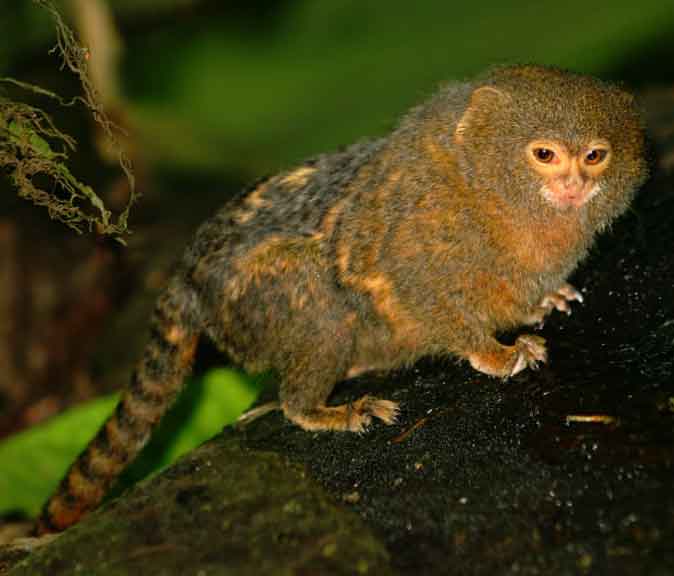Callithrix pygmaea (*) Cladus: Eukaryota Name Callithrix pygmaea, (Spix, 1823) References * [1] Listed animal in CITES Appendix I
------- The Pygmy Marmoset or Dwarf Monkey is a New World monkey native to the rainforest canopies of western Brazil, southeastern Colombia, eastern Ecuador, eastern Peru, and northern Bolivia. It is one of the smallest primates, and the smallest true monkey, with its body length ranging from 14 to 16 centimetres (5.5 to 6.3 in) (excluding the 15-to-20-centimetre (5.9 to 7.9 in) tail).[4] Males weigh around 140 grams (4.9 oz), and females only 120 grams (4.2 oz). Despite its name, the Pygmy Marmoset is somewhat different from the typical marmosets, most of which are classified in the genera Callithrix and Mico; as such, it is accorded its own genus, Cebuella.[2] Nicknames for this monkey often refer to its diminutiveness, as in the following two examples: mono de bolsillo ("pocket monkey") and leoncito ("little lion"). The Pygmy Marmoset is not to be mistaken for a 'thumb monkey' which is a fictional animal perpetuated by edited internet images.[5] The Pygmy Marmoset uses special types of communication to give alerts and warning to its family members. These include chemical, vocal, and physical types of communication. A trill is used to communicate over long distance. A sharp warning whistle and a clicking sound signal danger to their family members. A J-call is a series of fast notes repeated by the caller and is used at medium distances. Pygmy marmosets live 11-12 years in the wild, but in zoos, they live into their early twenties. Marmosets often live in groups made up of an adult pair and its offspring; ranging from 2-6 members. Young marmosets typically remain in the group until after 2 consecutive birth cycles. There are two subspecies of the Pygmy Marmoset:[1][2] * Cebuella pygmaea pygmaea – Western Pygmy Marmoset [ Source: Wikipedia, Wikispecies: All text is available under the terms of the GNU Free Documentation License |
|


